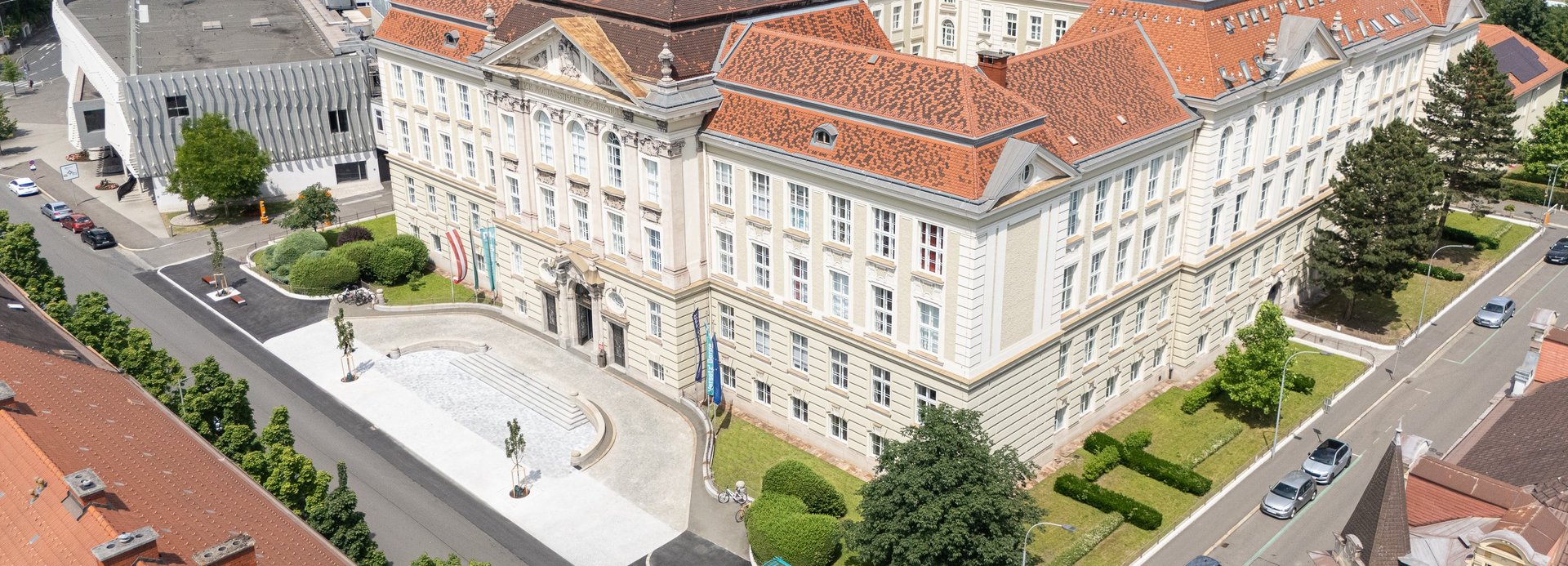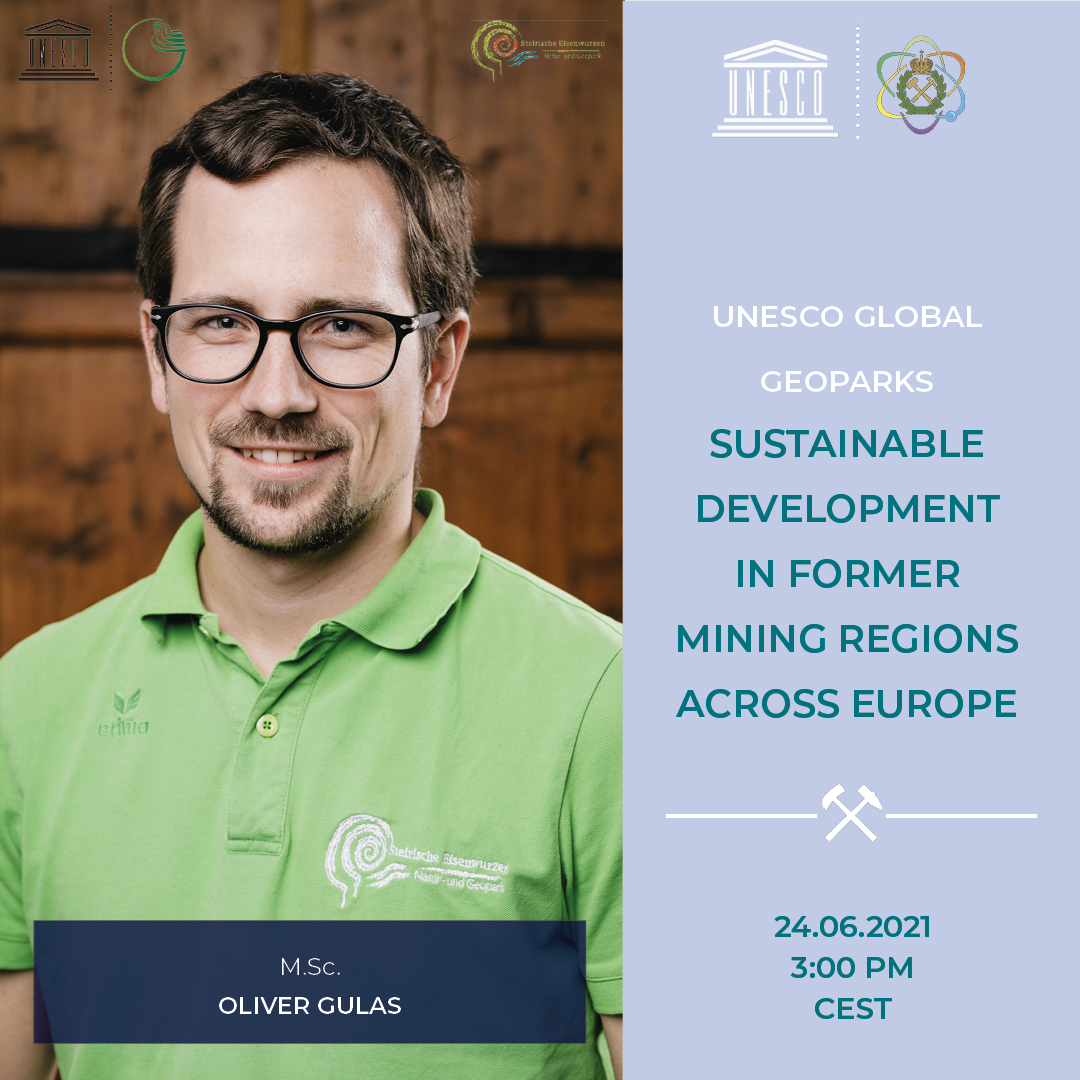On 24 June, the fourteenth and final unit of the Austrian branch’s online lecture series with the title “UNESCO Global Geoparks – Sustainable Development in Former Mining Regions Across Europe” took place.
The lecture was given by Oliver Gulas, who holds a master’s degree in Mountain and Climate Geography and is the CEO of the UNESCO Global Geopark Styrian Eisenwurzen.
UNESCO Global Geoparks are single, unified geographical areas where sites and landscapes of international significance are managed with a holistic concept of protection, education and sustainable development. These Geoparks contribute to eight of the seventeen Sustainable Development Goals, such as quality education, climate action, or responsible consumption and production. Today, about 170 UNESCO Global Geoparks exist in over 40 countries, many of them in Europe and Asia.
Mr. Gulas went into detail about the Geopark Styrian Eisenwurzen, located in the heart of Austria around the Styrian Erzberg, which is the largest open-pit iron ore mine in central Europe and the largest siderite deposit worldwide.
Over 80% of the Geopark’s area is covered with forests, and the landscape is shaped by 2 rivers. The Geopark contains gorges and caves, castles and waterfalls, museums for forestry or fossils.
The projects within this area are dedicated to preserving nature and protecting habitats, flora and fauna. They are designed to teach people about the geology and nature around them in a playful, interactive way, for example GeoRafting, which is a rafting tour that also teaches about the geological phenomena in the area. The Geopark is also a popular destination for school classes.
The lecture continued with the presentation of various UNESCO Global Geoparks across Europe:
- Ore of the Alps, located near the city of Salzburg, where the mining of copper, iron and gold has determined life for over 5500 years.
- Karavanke, a cross-border Geopark of Austria and Slovenia. The area has a rich iron and coal mining tradition, and is known worldwide among mineralogists for its lead and zinc ore deposits. They are currently working on a long-distance hiking trail around the Park with a length of 260 km and 12 daily stages of the trails to raise awareness of the rich geodiversity.
- Idrija Geopark in Slovenia, situated at the junction of two mountain ranges, creating an exceptional geoheritage with deep gorges, tectonic phenomena and deposits.
- Geopark Harz in Germany, the largest Geopark in Europe, that is filled with former mining geosites and where former quarries are now home to protected animals and plants.
- Troodos Geopark in Cyprus, that includes the biggest historic asbestos mine in Europe. The rehabilitation of the mine is now a big development project of the region, and already half of the area has already been reforested.
The lecture ended with a detailed Q&A session, giving insights into the management of such Geoparks and ongoing projects at Styrian Eisenwurzen.

